Exploring Small Nerve Sheath Tumors: Insights and Management
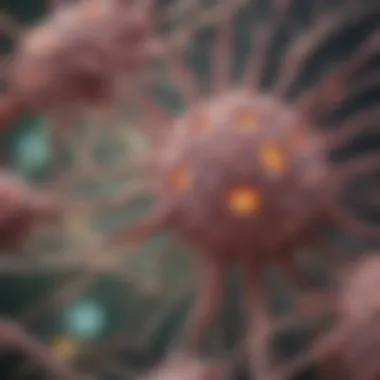
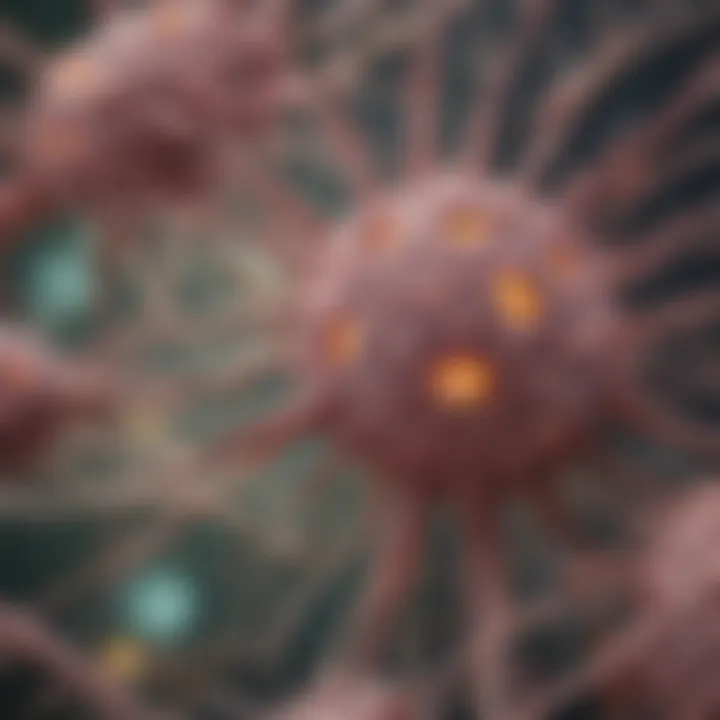
Intro
Small nerve sheath tumors present a unique facet of medical science, intertwining pathology with patient experiences. By exploring the different aspects of these tumors, we can demystify their continual impact on diagnosis and treatment within the healthcare landscape.
The complexity surrounding small nerve sheath tumors is not merely academic; it has real-world implications for those who face the challenges of managing their diagnosis. The fusion of clinical data, patient stories, and ongoing research fuels the understanding of these tumors, shaping transcendent approaches towards management.
Recent Advances
Latest Discoveries
In recent years, the field of neuro-oncology has seen notable advances in the understanding and treatment of small nerve sheath tumors. For example, studies have unveiled previously unknown genetic mutations that differentiate certain tumor types, leading to more tailored therapeutic interventions. These mutations revolve around particular signaling pathways which, when targeted, show promise in limiting tumor growth.
Furthermore, research has spearheaded the exploration of immunotherapeutic approaches to small nerve sheath tumors. The potential to harness the body’s immune response offers a more personalized treatment strategy. This represents a significant shift away from conventional chemotherapy methods, which have long dominated the treatment landscape.
Another area of promising discovery is in the realm of biomarkers. These tools are invaluable for predicting tumor behavior, allowing for proactive treatment plans that are fine-tuned to individual patient profiles. In the context of patient outcomes, timely intervention based on biomarker analysis can decrease unnecessary treatments and improve quality of life.
"Informed decisions in managing small nerve sheath tumors can radically alter patient treatment trajectories, creating a more personalized pathway to recovery."
Technological Innovations
Technology continues to revolutionize the landscape of medical diagnostics and treatment. Advanced imaging techniques, such as high-resolution MRI and PET scans, enhance our ability to detect and differentiate small nerve sheath tumors. These tools provide crucial details about tumor localization and spread, offering healthcare providers a clearer picture for planning interventions.
Moreover, the integration of machine learning and artificial intelligence into radiological assessments holds promise for streamlining diagnostic processes. By developing algorithms trained on vast data sets, there's potential for quicker and more accurate identification of tumor types. This may bridge crucial gaps in earlier detection and significant treatment planning efforts.
Methodology
Research Design
Research surrounding small nerve sheath tumors typically combines a mix of longitudinal studies and retrospective analyses. Such an approach allows researchers to gather data across various patient demographics and treatment contexts. Understanding the progression of these tumors over time also helps in establishing correlations between specific treatment regimens and patient outcomes.
Data Collection Techniques
Data collection methods range from direct patient surveys to the review of medical records. Engaging patients through qualitative interviews provides rich insights into symptom management and overall experiences. This qualitative data complements quantitative studies, giving a broader view of the impact these tumors have on quality of life. Furthermore, collaboration among researchers allows for multicenter studies, enhancing the diversity of data collected. Fresher insights emerge as professionals from varied backgrounds contribute to the discourse surrounding small nerve sheath tumors.
By weaving together clinical findings, historical data, and patient experiences, we can cultivate a comprehensive understanding of small nerve sheath tumors. This serves as the foundation for ongoing research initiatives and clinical advancements, improving outcomes for individuals affected by these complex growths.
Prelims to Small Nerve Sheath Tumors
The realm of small nerve sheath tumors has garnered attention not just from healthcare professionals, but also from those involved in academic research and patient care. Understanding these tumors can illuminate crucial aspects of nerve pathology, thus enhancing diagnosis and management strategies. This group of tumors, while relatively rare, represents a significant area of study in neurology and oncology. They encompass a variety of characteristics and behaviors, ranging from benign growths to malignant entity.
Definition and Characteristics
Small nerve sheath tumors primarily arise from Schwann cells, the supportive cells in the peripheral nervous system. At their most basic, they can be classified as either benign or malignant, with the former usually being referred to as neuromas or schwannomas. These types of tumors tend to be encapsulated and grow slowly, often remaining asymptomatic for long periods. On the other hand, malignant peripheral nerve sheath tumors can display aggressive behavior, leading to notable morbidity and mortality if not addressed timely.
Key characteristics include:
- Location: These tumors can develop in varying anatomical sites, including the cranial, spinal, and peripheral nerves.
- Symptoms: Many patients may exhibit nonspecific symptoms such as pain, numbness, or weakness, which can delay diagnosis.
- Histology: Understanding their microscopic features is integral for a definitive diagnosis.
The complexities in the biological behavior of these tumors warrant meticulously tailored treatment plans, which may involve both surgical and non-surgical approaches, depending on the specific case and individual patient conditions.
Historical Context
Tracing back the historical journey of small nerve sheath tumors reveals a gradual accumulation of knowledge within the medical community. Initially described in the mid-19th century, schwannomas were often mischaracterized. Pioneering advances in histopathology helped solidify their specific definitions and classifications.
In earlier years, these growths were labeled generically as nerve tumors, leading to significant confusion in clinical settings. However, advances in imaging technologies and a deeper understanding of neuroanatomy over the decades have significantly refined how these tumors are identified and treated today.
"The history of small nerve sheath tumors is a testament to evolving medical knowledge; what was once shrouded in mystery is now understood with unprecedented clarity."
The evolution of therapeutic approaches has also adapted as clinical experiences accumulated. Treatment modalities that once focused solely on tumor excision have broadened to include multidisciplinary strategies. These strategies incorporate radiation therapy and chemotherapy, influenced by the insights gained through rigorous scientific inquiry.
Pathophysiology of Small Nerve Sheath Tumors
Understanding the pathophysiology of small nerve sheath tumors is crucial, as it lays the groundwork for comprehending their formation, behavior, and treatment. This segment walks us through the biological intricacies that give rise to these tumors. By delineating their origins and cellular dynamics, we can better appreciate the nuances of their impact on affected individuals.
Origin and Development
Small nerve sheath tumors originate primarily from the Schwann cells that form the myelin sheath surrounding peripheral nerves. When these Schwann cells undergo aberrant growth or differentiation, they can contribute to the development of benign tumors like schwannomas and neurofibromas.
Several factors, both genetic and environmental, play a role in this process. For instance, mutations in the NF2 gene are closely associated with schwannomas, particularly vestibular schwannomas, more commonly known as acoustic neuromas. Genetic predisposition can often be inherited in families, occasionally intensifying the need for monitoring among those with a family history of such tumors.
Additionally, some cases may arise from the influence of external factors, including chronic injury or exposure to certain chemicals. This highlights the importance of both hereditary predispositions and lifestyle elements in understanding how these tumors come to be. The interplay of these factors makes it a complex, multifactorial process.


Cellular Mechanisms
At the core of the pathophysiology are the cellular mechanisms, where the unregulated cell cycle signals and alterations in apoptosis (programmed cell death) come into play. Aberrant activation of signaling pathways, such as the PI3K/Akt pathway, can lead to excessive proliferation of Schwann cells, consequently resulting in tumor development. This upsurge in cell growth may be fueled by various growth factors that promote survival and proliferation.
To delve further:
- Cell Signaling: Disruptions in the normal signaling pathways that regulate cell division can lead to uncontrollable growth.
- Molecular Changes: Specific mutations at the cellular level, especially in genes associated with tumorigenesis, can shift the balance from normal growth regulation to tumor development.
- Microenvironment Influence: The surrounding tissue, inflammatory factors, and extracellular matrix proteins further contribute to tumor growth and virulence. They can either support tumor growth or activate pathways that can hinder it.
Understanding these cellular mechanisms offers a glimpse into potentials for targeted therapies, enabling researchers to explore innovative treatments that could interrupt the growth pathways of these tumors.
In summary, the pathophysiology of small nerve sheath tumors encompasses their origins, cellular behaviors, and the intricate interplay between genetic and environmental factors. By unlocking these complexities, we pave the way for advancements in diagnosis, management, and potential therapeutic avenues.
Types of Small Nerve Sheath Tumors
Understanding the various types of small nerve sheath tumors is crucial for both diagnostic clarity and treatment planning. By distinguishing between these tumor types, healthcare providers can tailor their approach in managing each case effectively. This section delves into three primary categories: Schwannomas, Neurofibromas, and Malignant Peripheral Nerve Sheath Tumors. Each type has its unique characteristics and implications for patient care.
Schwannomas
Schwannomas, often referred to as neurilemomas, arise from Schwann cells, which are responsible for the myelin sheath surrounding nerves. These tumors can manifest at any peripheral nerve and can be either sporadic or associated with neurofibromatosis type 2. The clinical presentation of schwannomas tends to be subtle, often involving localized pain or sensory changes.
A key feature of schwannomas is their slow growth, which can result in significant compression of adjacent tissues over time. Surgical excision is commonly pursued when the tumor causes symptoms or shows signs of growth. Interestingly, despite surgical removal, recurrence rates are generally low due to their well-defined margins. Understanding these characteristics assists in monitoring and determining the best course of action for patients.
"Surgical removal of schwannomas usually leads to excellent outcomes, with patients often recovering near-normal function."
Neurofibromas
Neurofibromas originate from the nerve sheath and are closely associated with neurofibromatosis type 1. Their classification can be broadly divided into cutaneous, subcutaneous, and plexiform neurofibromas. Cutaneous neurofibromas appear as small, benign lumps on the skin, while plexiform neurofibromas may involve multiple nerves and present a more challenging clinical picture.
The growth of neurofibromas is typically slow, but they can become large over time, causing pain, discomfort, or functional impairment, particularly when pressing against vital structures. The management of neurofibromas varies; surgical intervention is often complicated by their infiltrative nature, making complete resection difficult. Some cases may necessitate a multidisciplinary approach, involving genetic counseling and monitoring.
Malignant Peripheral Nerve Sheath Tumors
Malignant Peripheral Nerve Sheath Tumors (MPNSTs) represent the most serious form within this spectrum. These tumors can arise de novo or may develop from existing neurofibromas, particularly in patients with neurofibromatosis type 1 or 2. The aggressive nature of MPNSTs makes early diagnosis critical for improving outcomes.
Patients may present with sudden pain, swelling, or neurological deficits in the affected area. The diagnosis often requires imaging studies and biopsy for definitive identification. Treatment typically involves a combination of surgery, radiation, and sometimes chemotherapy, reflecting the urgency of combatting this aggressive variant. The prognosis can vary significantly based on factors such as tumor size, location, and metastasis, thus necessitating continuous follow-up.
In summary, recognizing the distinctions between Schwannomas, Neurofibromas, and Malignant Peripheral Nerve Sheath Tumors is essential for effective management and improving patient outcomes. Each type poses unique challenges and considerations that can shape treatment decisions and patient experiences.
Clinical Presentation of Small Nerve Sheath Tumors
Understanding the clinical presentation of small nerve sheath tumors is crucial, as it provides insight into how these tumors affect patients and how they manifest in various ways. The early detection of symptoms can significantly impact management and treatment outcomes, making it essential for both healthcare professionals and laypersons to recognize the signs associated with these tumors. This section breaks down the major symptoms, signs, and their implications on nerve function, thus laying the groundwork for better awareness and understanding of these tumors.
Symptoms and Signs
Small nerve sheath tumors can present a range of symptoms, which can vary greatly depending on the tumor type and location. Common symptoms may include:
- Localized Pain: Patients often report a persistent ache near the tumor site, often exacerbated by movement or pressure.
- Numbness or Tingling: Affected individuals may experience sensations like "pins and needles" due to nerve compression or irritation.
- Weakness: Muscle weakness in the area served by the affected nerve can manifest, posing challenges in daily activities.
- Swelling or Lumps: In some cases, the tumor may be palpable as a lump under the skin.
It is important to emphasize that these symptoms do not always indicate a tumor; they could arise from various other medical issues. Therefore, proper medical evaluation is necessary to rule out other causes.
Additionally, some patients may not exhibit overt symptoms until the tumor has progressed significantly, underscoring the need for increased awareness among individuals regarding these tumors.
Impact on Nerve Function
The impact of small nerve sheath tumors on nerve function can be profound, influencing both physical abilities and quality of life. Here are some important considerations:
- Functional Impairment: The location of the tumor dictates how severely nerve function may be compromised. For example, a tumor on a peripheral nerve can lead to significant motor and sensory deficits.
- Daily Life Challenges: Patients may experience difficulties performing common tasks. These challenges can range from simple activities like holding objects to more complex ones such as driving.
- Psychosocial Factors: The emotional toll of living with a nerve sheath tumor cannot be overlooked. The uncertainty and potential for chronic pain can lead to anxiety and depression, affecting overall well-being.
"Awareness of symptoms and their implications on nerve function is essential for early detection and intervention, ultimately improving patient outcomes."
Identifying the nuances of how these tumors manifest is pivotal in tailoring appropriate treatment strategies and supporting effective management of symptoms. This awareness not only aids in clinical practice but also empowers patients in their healthcare journeys.
Diagnostic Approaches
The landscape of diagnosing small nerve sheath tumors is both intricate and critical in formulating effective treatment strategies. Understanding the diagnostic methodologies not only enhances the accuracy of identifying these tumors but also lays the groundwork for subsequent management options. Given the subtle symptoms often associated with small nerve sheath tumors, employing a multifaceted diagnostic approach is essential. Focusing on various imaging techniques, histological exams, and genetic testing allows healthcare professionals to piece together a comprehensive picture, ultimately facilitating timely interventions and improving patient outcomes.
Imaging Techniques
Imaging techniques serve as the cornerstone of initial assessments when small nerve sheath tumors are suspected. These methods enable clinicians to visualize the tumors and understand their precise nature, location, and any potential impact on surrounding structures. Different imaging modalities bring their own strengths and may be chosen based on particular clinical scenarios.
MRI
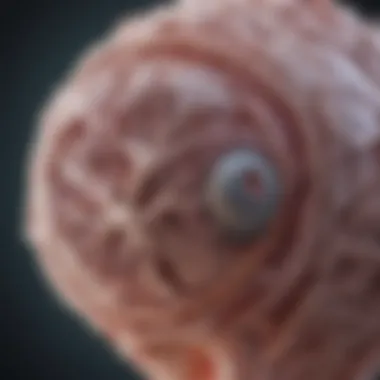

Magnetic Resonance Imaging (MRI) stands out with its high-resolution images that provide detailed insights into soft tissue characteristics. One of the key benefits of using MRI in diagnosing small nerve sheath tumors is its unparalleled capacity to differentiate tumor types based on their unique internal structures. This feature proves particularly advantageous, as subtle differences can help in identifying whether the tumor is a schwannoma, neurofibroma, or a malignant variation.
However, while MRI is widely regarded as beneficial, it is not without limitations. The availability of MRI machines and the duration of scanning can impact its accessibility in some settings. Moreover, patients with certain implants or metallic devices may not be suitable for MRI exams.
CT scans
On the other hand, Computed Tomography (CT) scans offer a rapid imaging solution, ideal for urgent cases. A key characteristic of CT scans is their ability to provide cross-sectional images of the body. This is especially useful when evaluating bony structures or regions where nerves and tumors might be entwined. The quick turnaround time of CT scans makes them a popular choice in emergency departments for initial assessments.
Nevertheless, one should consider the unique features of CT scans. While they are great for visualizing calcifications or bone involvement, their soft tissue resolution is not as refined as that of MRI. Additionally, the exposure to ionizing radiation might be a concern, particularly in younger populations or for patients requiring multiple scans.
Ultrasound
A less conventional but equally significant imaging approach is ultrasound. This modality is particularly useful for evaluating small nerve sheath tumors located in superficial areas. The key characteristic of ultrasound is its real-time imaging capability, allowing for dynamic assessment of tumors during movement or in relation to nearby structures. This can help in assessing the interaction between the nerve and the tumor, providing crucial information for surgical planning.
However, it's worth noting that ultrasound is operator-dependent and may not visualize deeper tumors as effectively as MRI or CT scans. The quality and accuracy can vary with the practitioner's experience, potentially leading to missed diagnoses.
Histological Exam
Histological examinations play a pivotal role in the diagnostic process, complementing imaging results. This approach involves taking tissue samples for microscopic evaluation. A thorough histological analysis helps confirm the type of tumor by identifying specific cellular characteristics. Such clarity aids in distinguishing between benign and malignant forms, thus guiding treatment decisions. A histological exam is often performed following imaging to corroborate what was visualized on scans.
Genetic Testing
In certain cases, genetic testing can further enhance diagnostic accuracy, especially when a hereditary component is suspected. This type of testing identifies genetic mutations or alterations that may influence tumor behavior or predispose individuals to specific tumor types. For small nerve sheath tumors, genetic tests, such as those examining the NF1 gene, can be particularly informative for understanding the underlying pathology and tailoring management strategies to the patient's needs.
In summary, diagnosing small nerve sheath tumors involves a complex interplay of various approaches. Combining imaging techniques with histological and genetic assessments allows healthcare professionals to create a comprehensive understanding of these tumors, ultimately aiming for the best patient outcomes.
Management and Treatment Strategies
Effective management of small nerve sheath tumors is vital because these tumors can significantly impact both the physical and emotional well-being of patients. The management strategies are shaped by the tumor type, size, location, and symptoms presented by the patient. Understanding the available options helps ensure that patients receive the most suitable treatment tailored to their individual needs.
Surgical Intervention
Surgical intervention often acts as the cornerstone of treatment for small nerve sheath tumors. Depending on the tumor's type and location, surgery aims to remove as much of the tumor as possible while preserving the surrounding nerve function.
The success of surgical intervention largely relies on:
- Tumor Size and Location: Larger tumors or those close to vital structures may be more complex to remove.
- Type of Tumor: Schwannomas may be easier to remove than neurofibromas due to their clear capsule.
- Patient's Health: The overall health and comorbidities of the patient can influence surgical outcomes.
Recovery after surgery might involve physical therapy to assist with regaining strength and mobility. Furthermore, patients may face issues like nerve damage or discomfort post-surgery, underscoring the need for ongoing support post-operative care.
"The aim of surgery is not just removal, but preservation of function and quality of life."
Radiation Therapy
Radiation therapy emerges as an adjunct or alternative to surgery, especially in cases where complete surgical removal isn’t feasible. This might include tumors located near critical nerves or in patients who are not surgical candidates due to medical conditions.
The benefits of radiation therapy include:
- Targeted Treatment: Minimally invasive, it focuses on shrinking the tumor while sparing healthy tissue.
- Pain Management: Effective in alleviating pain caused by the tumor's pressure on nerves.
- Control of Tumor Growth: Can be vital in slowing down the progression in inoperable cases.
However, it’s important to note potential side effects such as fatigue, skin irritation, and, in rare cases, secondary tumors. The decision to pursue radiation often involves a nuanced discussion of risks versus benefits between the patient and the treating physician.
Chemotherapy Considerations
Chemotherapy plays a more limited role in treating small nerve sheath tumors. However, it may be applicable, particularly in cases of malignant peripheral nerve sheath tumors where aggressive treatment is necessary.
Some factors to contemplate include:
- Tumor Type: Neurofibromas are generally resistant to chemotherapy, whereas malignant variants might respond better.
- Combination Strategies: Chemotherapy can sometimes complement surgical and radiation treatment, aiming for a multi-faceted approach to care.
- Side Effects: Patients should be adequately informed about common side effects such as nausea, hair loss, and increased infection risk associated with chemotherapy.
Ultimately, the treatment plan should be personalized, considering the unique aspects of each case. Regular discussions with a multidisciplinary team ensure that all avenues are explored for optimal patient outcomes.
Prognosis and Outcomes
Understanding the prognosis and outcomes of small nerve sheath tumors is crucial for patients and healthcare providers alike. It not only informs treatment decisions but also sets expectations for recovery and quality of life. Prognosis can greatly vary based on tumor type, location, and individual patient factors. This section dives into the elements that influence prognosis and the significance of long-term follow-up care.
Factors Influencing Prognosis
Several aspects can affect the prognosis of individuals diagnosed with small nerve sheath tumors. While no two cases are identical, some common factors play a pivotal role:
- Tumor Type: The nature of the tumor greatly impacts prognosis. For instance, schwannomas tend to have better outcomes compared to malignant peripheral nerve sheath tumors, which may be more aggressive.
- Size and Location: Larger tumors or those located in critical areas can complicate surgical intervention and therefore affect overall outcomes.
- Patient’s Age and Overall Health: Younger, healthier individuals may have better tolerability to treatments and a more favorable prognosis than older patients or those with comorbid conditions.
- Histological Features: Specific characteristics seen under microscopic examination, such as cellularity and mitotic activity, can provide valuable prognostic information.
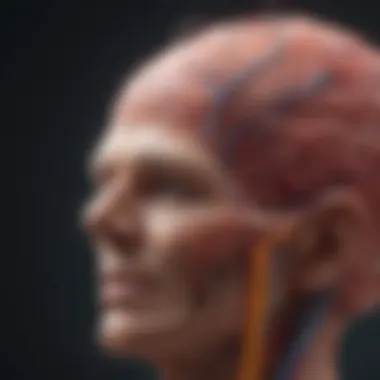
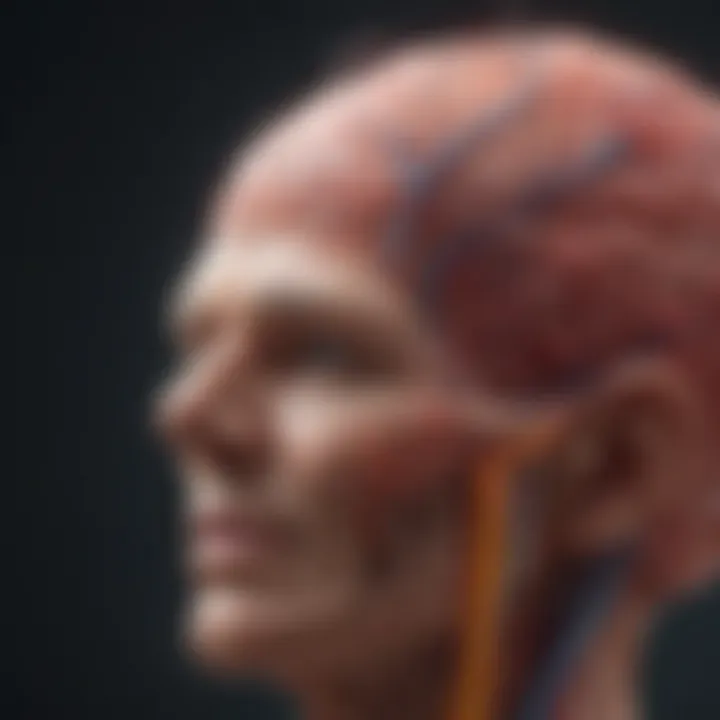
In essence, understanding these factors creates a clearer picture of what one might expect during and after treatment. It can steer clinicians towards a more tailored approach, enhancing the efficacy of management strategies.
Long-term Follow-up
Long-term follow-up is often a cornerstone of care for those who have dealt with small nerve sheath tumors. Regular monitoring can lead to the early detection of potential recurrences or complications. This includes imaging studies and clinical evaluations that assess for new symptoms or changes in the existing tumor.
Moreover, follow-up visits provide a unique opportunity for patients to discuss the ongoing emotional and physical impacts of their diagnosis. As each patient copes differently, having a structured support system in place, including oncologists and mental health professionals, can be instrumental for recovery.
- Surveillance Strategies: Routine MRI scans post-treatment can help in identifying any alarming changes in tumor behavior. These scans should be aligned with the previous histological findings and tumor size to ascertain the likelihood of recurrence.
- Quality of Life Assessments: Gather information on how the patient is feeling mentally and physically can guide future care plans. Understanding the long-term impacts—whether that's mobility issues or emotional distress—helps shape resources available to the patient.
"Prognosis isn't just about numbers; it's about people—our treatment should reflect their lives."
Patient Quality of Life
When talking about small nerve sheath tumors, it's easy to get lost in the medical jargon that surrounds their diagnosis and treatment. Yet, one fundamental aspect that deserves attention is how these tumors impact patient quality of life. Importantly, this concept extends far beyond mere survival rates; it encompasses the day-to-day functioning, emotional well-being, and physical health of those affected by these tumors.
Physical and Emotional Impacts
Living with a small nerve sheath tumor can bring about a multitude of physical symptoms. Pain and discomfort might be first on the list, given that these tumors can press on surrounding nerves, leading to sensations ranging from mild to debilitating. Furthermore, loss of strength or coordination can severely disrupt a person’s abilities, affecting their professional life and hobbies they once loved.
Alongside physical challenges, emotional impacts cannot be overlooked. The uncertainty that accompanies a diagnosis, or the fear of recurrence after treatment, weighs heavily on patients and their families. Anxiety, depression, and feelings of isolation can surface, creating a whirlwind of emotional turmoil that influences overall quality of life. It’s not uncommon for individuals to feel as if they are on a rollercoaster of emotions, with highs and lows dictating their daily experiences.
"Managing small nerve sheath tumors isn't just about treating the tumor; it's about nurturing the person experiencing it."
Patients may find themselves grappling with existential questions, seeking meaning and purpose amid their struggles. Understandably, the physical and emotional repercussions intertwine, creating an experience that is both complex and challenging.
Support Systems and Resources
In the face of such difficulties, support systems play a critical role in enhancing patient quality of life. Family, friends, and support groups can substantially uplift a person’s spirits. Connecting with others who are on similar journeys can foster a sense of belonging and validation. These networks can provide emotional support, practical advice, and crucial encouragement, all of which are invaluable during this tough chapter.
Moreover, outside of personal connections, there are numerous resources available designed to provide assistance. Organizations like the National Cancer Institute and local cancer support centers offer information, counseling, and community programs aimed at enhancing patient experiences. These avenues can be effective in sharing knowledge about treatment options, coping strategies, and lifestyle adjustments that contribute to better quality of life.
- Emotional support groups: Often offer a safe space to share experiences.
- Educational resources: Provide up-to-date information on living with small nerve sheath tumors.
- Healthcare professionals: Such as counselors and social workers, can help navigate both emotional and financial concerns.
Navigating life with these tumors can feel daunting, but understanding that one is not alone in this journey can serve as a powerful motivator. A comprehensive approach incorporating both emotional and physical support can lead to improved outcomes and a more fulfilling life, even in the face of adversity.
Current Research and Innovations
In the landscape of small nerve sheath tumors, staying ahead of the curve often hinges on cutting-edge research and innovative treatment options. Research in this field is crucial, not just for the advancement of medical science, but for enhancing patient outcomes and informing clinical practices. As medical professionals dissect the complexities of these tumors, they are unearthing new insights that can lead to more effective therapeutic strategies. The nexus between ongoing research and clinical application indeed holds the potential to shift treatment paradigms entirely.
Emerging Therapeutic Options
The hunt for emerging therapeutic options is relentless, driven by the need to improve treatment efficacy for patients suffering from small nerve sheath tumors. Recently, targeted therapies, including specific drugs that interfere with growth signaling pathways, have become a focal point of research. These therapies aim to hit the bullseye by homing in on cellular mechanisms that foster tumor growth while minimizing damage to surrounding healthy tissues. For instance, drugs like Tyrosine Kinase Inhibitors are being evaluated for their role in treating Neurofibromas.
Moreover, immunotherapy is coming into play, leveraging the body’s immune system to combat tumors more effectively. By boosting immune response, patients may see a reduction in tumor size or, in some cases, a complete response to therapy. Studies are increasingly focusing on the identification of biomarkers that can predict response to such therapies, making treatment more personalized and fostering an environment where oncologists can tailor treatment regimens based on individual patient profiles.
Clinical Trials and Studies
Clinical trials remain a vital conduit between research and practice, providing essential data that can validate or challenge existing treatment protocols. Currently, a number of trials are underway, aiming to examine the safety and efficacy of novel treatments for small nerve sheath tumors.
- Phase I and II Trials: These trials often explore dosing and side effects, helping researchers determine the best way to administer new therapies.
- Comparative Studies: Some trials seek to directly compare new treatments with established methods, shedding light on potential advantages or drawbacks.
- Longitudinal Studies: Watching how patients fare over time can highlight the long-term benefits and risks associated with different treatment regimens.
"Through rigorous clinical studies, we can uncover patterns that provide insights into the most promising approaches to treating these tumors."
These initiatives not only contribute to the collective understanding of tumor biology but also foster a spirit of collaboration among researchers, clinicians, and pharmaceutical companies, which is invaluable for progress.
Ending
In wrapping up the discussion about small nerve sheath tumors, it's essential to underline the significance of this topic in the broader scope of neuro-oncology. Understanding these tumors isn’t just a matter of academic interest; it carries weight for clinical practice and patient well-being. Here are some key elements of focus:
- Patient-Centric Approach: The management of small nerve sheath tumors should prioritize the individual patient’s quality of life. This includes considering treatment options that not only target the tumor but also maintain nerve function and minimize discomfort.
- Interdisciplinary Collaboration: Effective treatment often requires collaboration between neurologists, oncologists, radiologists, and surgical teams. This holistic approach can lead to more informed decisions and better outcomes.
- Continual Education and Awareness: Keeping healthcare providers updated about the latest research, diagnostic tools, and therapies is critical. The landscape of treatment for these tumors is evolving, and staying informed can make a significant difference in patient care.
- Research Importance: Ongoing studies and clinical trials are crucial for discovering better treatment modalities and improving long-term survival rates. The more we learn, the better we can tackle the challenges posed by these tumors.
"The journey of understanding small nerve sheath tumors is an ongoing one, highlighting the need for awareness and advancements in treatment methodologies."
In summary, concluding this article not only brings to light the key findings but also emphasizes a future where knowledge and compassion intersect in managing small nerve sheath tumors. This evolution drives the narrative forward, calling for a comprehensive grasp of their complexities to foster enhanced outcomes for those affected.
Summary of Key Points
- Definition and Characteristics: Small nerve sheath tumors are broadly classified into schwannomas, neurofibromas, and malignant peripheral nerve sheath tumors, each with distinct features and implications for treatment.
- Pathophysiology: Understanding the origin and development of these tumors helps in diagnosing and treating them effectively.
- Diagnostic Approaches: Advanced imaging techniques and genetic testing play a critical role in early detection and tailored treatment options.
- Management Strategies: From surgical options to evolving therapies like radiation and chemotherapy, management is multifaceted, requiring a patient-specific plan.
- Current Research: Emerging therapeutic options and clinical trials indicate a promising future for better treatment pathways and improved patient outcomes.
Future Directions in Research
Looking ahead, research into small nerve sheath tumors is set to explore several promising avenues:
- Genetic Research: Investigating the genetic basis of these tumors can open doors for targeted therapies, leading to more effective treatment stratagems.
- New Treatment Modalities: Exploring immunotherapies and novel drug combinations may enhance the efficacy of treatments while reducing side effects.
- Longitudinal Studies: Conducting long-term studies will shed light on the outcomes of various therapeutic interventions over time, guiding best practices.
- Patient-Centric Research: Developing frameworks that evaluate patients' quality of life post-treatment will help shape more holistic treatment models.
- Technology Utilization: Harnessing artificial intelligence and machine learning in diagnostics can facilitate earlier detection and optimize treatment plans.
Ongoing collaboration among researchers, clinicians, and patients will be key to driving progress in this field.















